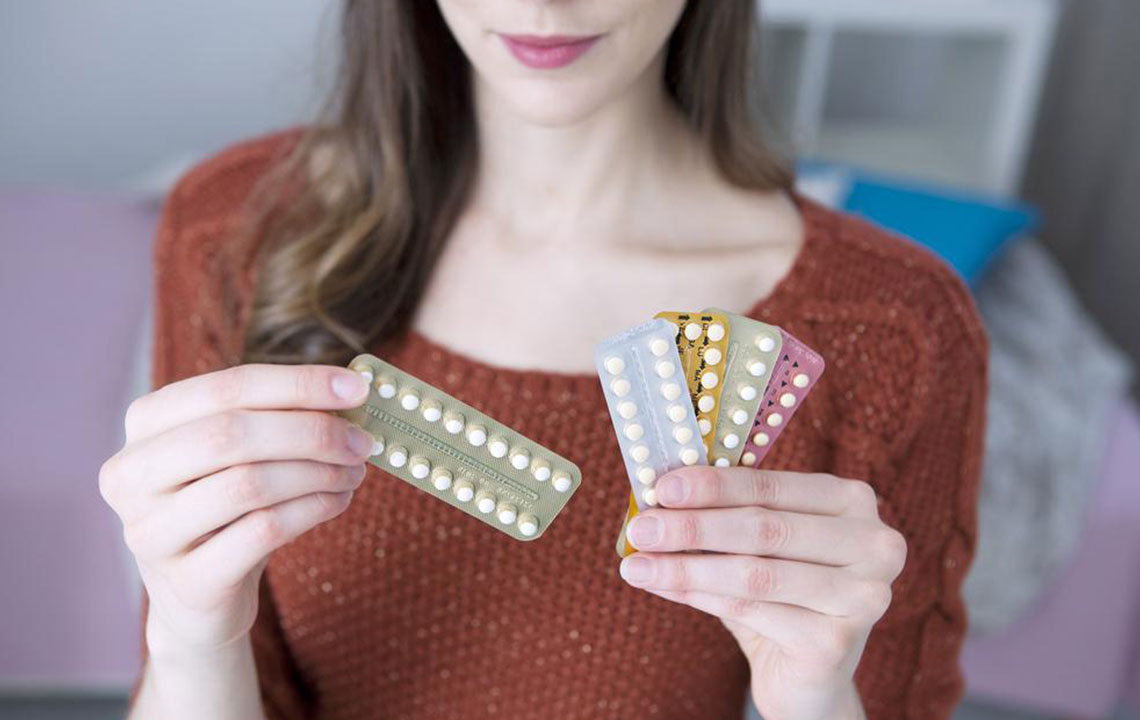8 Popular Contraceptives for Women

There are several options of contraceptives for women available these days to avoid an unwanted pregnancy. It is easy to get confused about which one to choose since there are so many. It is advisable to know about each option in detail and then decide which one would suit you best. Like with any sort of medication, contraceptives too should be taken only after consulting with your doctor. Eight of the most effective and common methods of birth control are discussed below. Speak to your doctor and only then choose the most viable contraceptive.
I. Combination Pill
Several drug manufacturing companies produce birth control pills. These are easily available at any drug and chemist shop. They are believed to be effective 99% of the time if taken every day at the same time. These pills help to restore regular menstruation cycle and ease hot flashes. However, they are not meant for everybody. People who are 35 years or older and those who smoke should avoid using this pill. The estrogen may result in precarious blood clots. People suffering from migraines too should avoid them since these pills can prompt painful headaches.
II. Progestin-only Pill
Progestin-only is also called the mini pill and these medicines do not contain estrogen. Thus, they are considered safe for people who smoke, have diabetes or suffer from heart diseases or are prone to get blood clots. Moreover, they do not hamper in the production and supply of milk for breastfeeding mothers. The pills have to be taken every day at the exact same time. The medications would not work if you fail to take them regularly. You must have a backup method of contraception if you are more than three hours late to take the pills.
III. Extended-cycle Pill
This pill is taken to prevent pregnancy and also if you want to extend your menstruation cycle. When you start taking this pill, you will get your period only every three months. There are medicines in this category that can stop menstruation for even a year. The medicine has to be taken every day all year round for them to work as designed.
IV. Vaginal Ring
A flexible plastic is used to make this ring and it works towards delivering progestin and estrogen as the combination pill does. The ring has to be placed in your vagina for three weeks. After that, you need to remove the same for one week to have a regular period. The vaginal ring is not made for women who suffer from certain kinds of cancer, those who smoke or have blood clots.
V. Diaphragm
The diaphragm is made using rubber and looks like a dome. This product prevents the sperm from fertilizing the egg. It needs to be used along with a spermicide always. The product covers the cervix. The diaphragm must be fitted in the doctor’s office. The diaphragm may not work if your weight fluctuates more than 10 pounds at any single point of time. It has to be refitted if you lose or gain weight. People who suffer from bladder infections frequently must avoid using this form of birth-control. Women who suffer from toxic shock syndrome must avoid this option at all cost.
VI. IUD
There are various types of IUDs or Intrauterine devices available in the market today. These are surgically implanted. Some varieties work by preventing the sperm from getting to the egg, while some other works by the method of releasing hormones. Once implanted, the IUD can work effectively 99% of the time for about 10 Years. IUDs are recommended for women who have already given birth to at least one child. This is because it can cause pain to those who have not conceived yet since it makes the uterus expand when implanted. This is not a feasible option if you are looking forward to having a child within two to three years. This is because IUDs come at a high cost and to remove it within a couple of years is not worth the money spent on the birth-control option.
VII. Female Condom
Female condoms are made of soft plastic or polyurethane and help to protect against STDs. They are inserted into the vagina, above the cervix, almost like a diaphragm. The female condom can be put on eight hours in advance prior to having sex. Female condoms are not as effective as male condoms to provide protection against STDs and prevent pregnancy.
Always consult with your doctor before using any kind of contraception.


